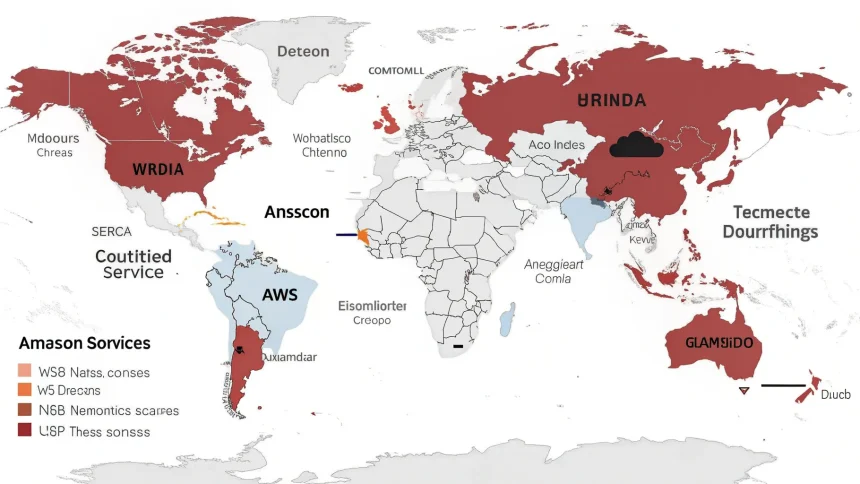A significant disruption at Amazon Web Services (AWS), the cloud computing division of Amazon, has caused widespread internet service interruptions globally. The technical issue affected numerous websites, online services, and applications that rely on AWS infrastructure.
Users across multiple continents reported difficulties accessing various online platforms, highlighting the critical role that Amazon’s cloud infrastructure plays in supporting the modern internet ecosystem. The outage demonstrated how a single point of failure at a major cloud provider can have cascading effects throughout the digital landscape.
Widespread Impact
The AWS problem affected a diverse range of services spanning multiple industries. Streaming platforms, e-commerce websites, financial services, and productivity tools all experienced disruptions during the outage. Many companies that build their digital infrastructure on Amazon’s cloud services were forced to communicate with customers about temporary service limitations.
Social media platforms filled with reports from users unable to access critical services, while businesses reliant on cloud-based operations faced workflow interruptions. The incident underscored the high level of dependency that both consumers and businesses have on cloud infrastructure.
Technical Details
While Amazon has not provided complete details about the root cause, technical experts suggest the issue likely stemmed from problems in one of AWS’s core services. AWS operates through a regional structure, with data centers clustered in geographic locations around the world.
The following factors likely contributed to the widespread nature of the disruption:
- Interconnected dependencies between AWS services
- Cascading failures as systems attempted to respond to the initial problem
- High concentration of major websites and services on the AWS platform
Business Implications
The outage raises questions about resilience strategies for companies that rely heavily on single cloud providers. Many organizations have embraced cloud computing for its scalability and cost advantages, but incidents like this highlight potential vulnerabilities in this approach.
“This kind of outage demonstrates why many large enterprises are adopting multi-cloud strategies,” said a technology analyst familiar with cloud infrastructure. “Distributing workloads across multiple providers can help mitigate the risk of service disruptions.”
Financial impacts from the outage could be substantial, with online retailers losing sales opportunities and subscription services facing potential compensation claims from customers unable to access paid content during the disruption.
Recovery Efforts
Amazon’s technical teams worked to restore services, implementing fixes across their global infrastructure. The company’s status dashboard updated throughout the incident, showing gradual recovery across affected regions and services.
Many affected companies implemented their own contingency measures while waiting for AWS to resolve the underlying issues. These ranged from activating backup systems to temporarily redirecting traffic to alternative infrastructure where possible.
As services returned to normal operation, many organizations began reviewing their disaster recovery plans and considering how to better prepare for similar incidents in the future.
This incident serves as a reminder of both the remarkable reliability of cloud infrastructure most of the time and its potential points of vulnerability. As digital dependency continues to grow, the resilience of core internet infrastructure remains a critical concern for businesses and consumers alike.









